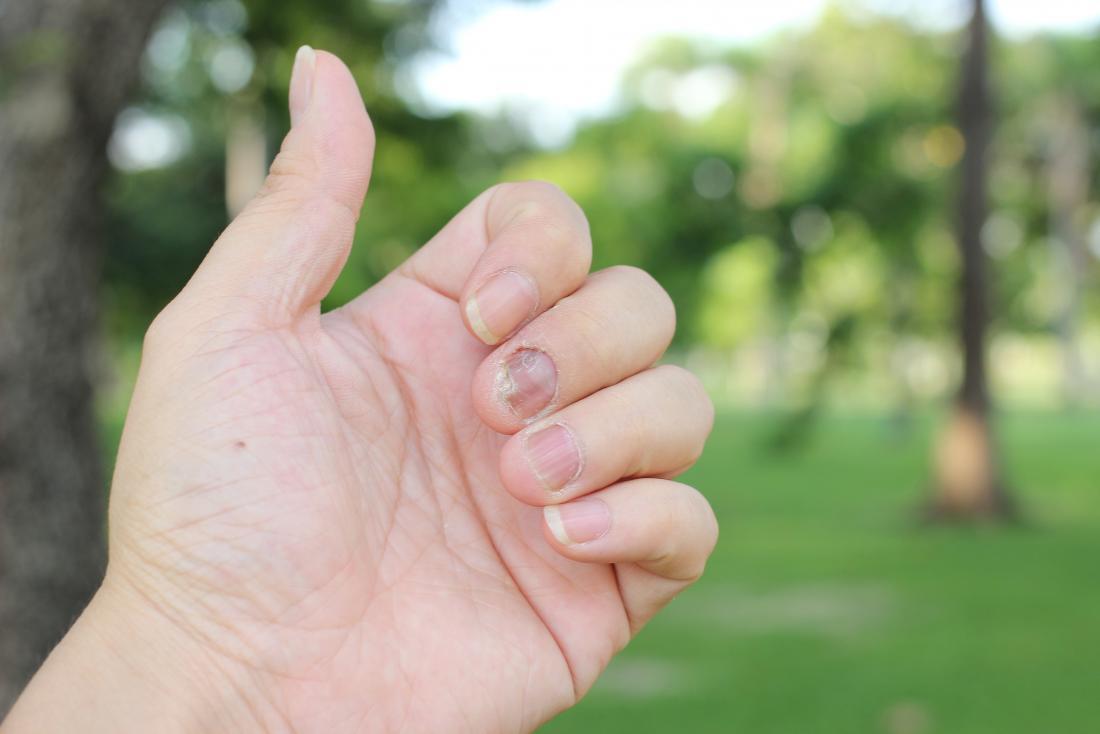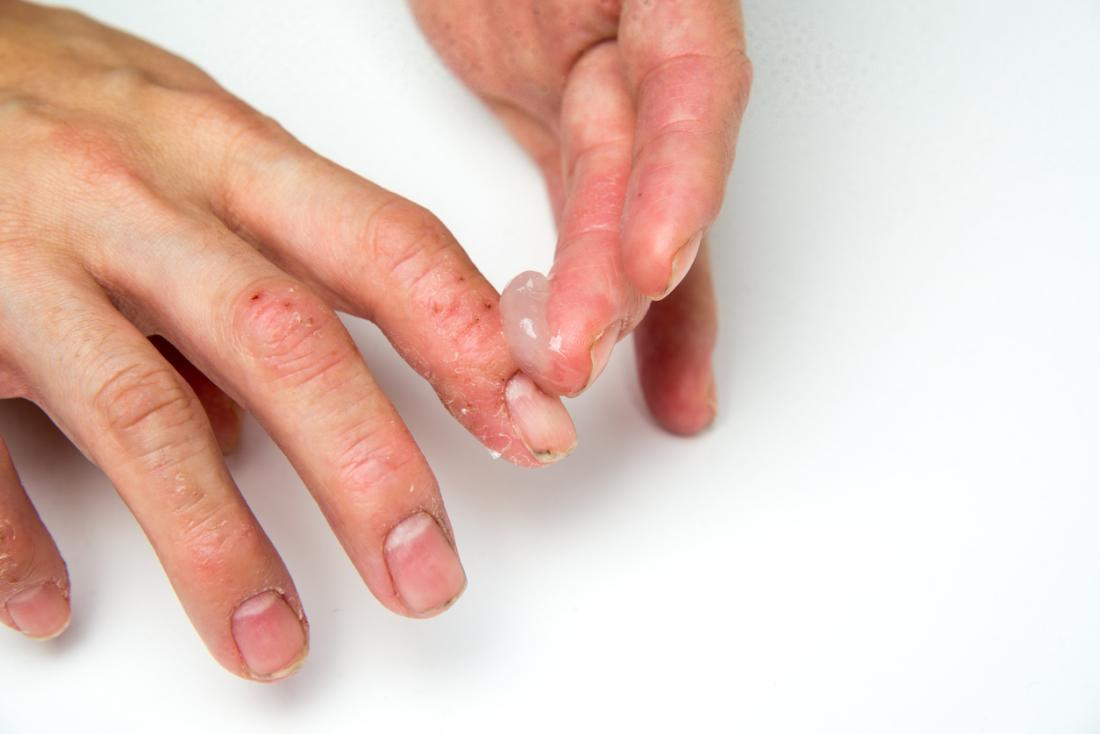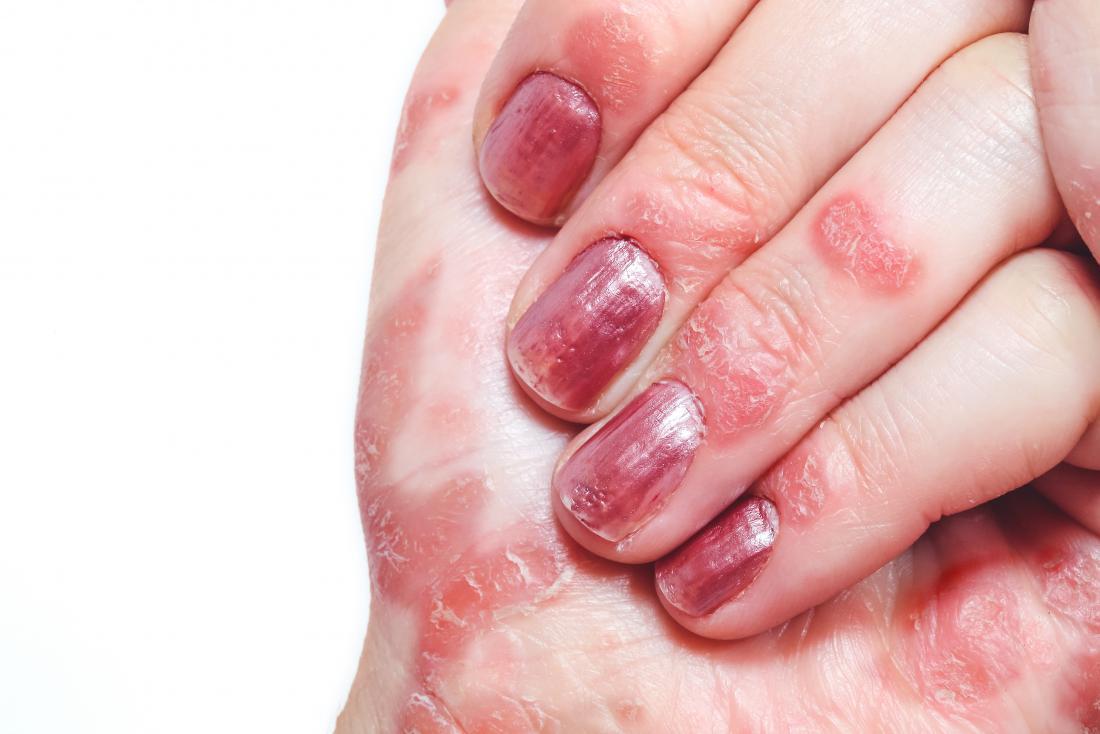Nail psoriasis: What to do about it?
Nail psoriasis causes changes in the fingernails and toenails that can range from discoloration to alterations in the nail bed.
These symptoms can have a physical and emotional impact on a person and affect their quality of life. It can take time to get rid of nail psoriasis, but treatment is available.
A study published in 2016 noted that 80–90 percent of people with plaque psoriasis also have nail psoriasis.
According to research published in 2014, 70–80 percent of people with psoriatic arthritis have nail psoriasis, while 5–10 percent of people with nail psoriasis do not have another type of the disease.

Psoriasis is a chronic disease of the immune system. Symptoms can vary from mild to severe.
Initially, psoriasis causes changes beneath the skin, though it appears as a skin condition.
Usually, skin cells reproduce every 28–30 days. When a person has plaque psoriasis, their overactive immune system causes these cells to reproduce every 3–4 days. As a result, some visible sections of skin are thick, red, and itchy.
Nail psoriasis often accompanies other forms of the disease because the nails are part of the skin. They grow from the nail root, which is under the cuticle, and psoriasis can form in the nail root.
Signs of psoriatic nails include:
- pitting, which involves dents or holes forming in the nail
- white spots on the nail
- grooves across the nail
- a change in the nail’s shape or size
- thickening of the nail
- separation of the nail from the nail bed
- crumbling nails
- discoloration, in which the nail may become yellow or brown, for example
- blood under the nail
The nails may also split, thicken, crumble, or pull away from the finger. This can make it difficult to perform certain tasks, such as sewing.
Other possible changes include:
Onycholysis: If the nail becomes detached from the nail bed, an infection can develop in the gap. If this happens, a yellowish patch may form on the tip of the nail and extend to the cuticle.
Subungual hyperkeratosis: A chalky substance may develop under the nail, creating a gap. The nail may feel uncomfortable or painful when a person applies pressure to it, and an affected toenail may hurt when wearing shoes.
Nail psoriasis symptoms vary, and each can also indicate other conditions.
Conditions with similar symptoms
Nail psoriasis can resemble a fungal infection, such as onychomycosis. This also causes the nails to thicken. Moreover, onychomycosis often occurs alongside nail psoriasis. This can make diagnosis difficult.
Getting a correct diagnosis is important because the treatment for a fungal infection is different from the treatment for nail psoriasis. Anyone with psoriasis and changes in their nails should make sure that their doctor is aware of their psoriasis.

Nail psoriasis does not always cause physical pain, but some people may find it unsightly, and it can cause embarrassment. Treatment can prevent it from worsening.
Treatments include:
- topical medicines, such as creams applied directly to the nails
- systemic medications, which affect the whole body
- intralesional therapies, which involve a doctor injecting medication into the nail bed
Topical applications
Creams, ointments, or nail lacquers containing the following ingredients may help to improve symptoms in mild cases:
- corticosteroids
- calcipotriol, which is similar to vitamin D3
- tazarotene
- tacrolimus
Combinations of these, such as a steroid with calcipotriol, may be effective.
Systemic medications
If nail psoriasis makes it difficult to walk or use the hands, a doctor might prescribe systemic medications. These drugs affect a person’s whole body, not just the areas with symptoms.
Examples of medications include:
- methotrexate
- cyclosporine (Neoral)
- retinoids, such as acitretin (Neotigason)
- apremilast (Otezla)
It can take a long time for the nail to visibly improve.
Biologics
A new class of drugs called biologics is proving useful in treating a range of conditions, including some forms of psoriasis.
A number of these agents are effective in treating nail psoriasis.
Fungal infection
According to the National Psoriasis Foundation, around one-third of people with nail psoriasis also have a fungal infection. A doctor can prescribe medications to treat both at the same time.
If a person also has a fungal infection, the doctor may prescribe:
- terbinafine (Lamisil)
- itraconazole (Sporanox)
However, these drugs can have adverse effects, ranging from a skin rash to liver damage.
A fungal infection affects the part of the nail that has already formed, but nail psoriasis causes issues where the new nail is forming. Topical medications for psoriasis may never reach this area, so doctors usually prescribe oral medications.
Corticosteroid injections
A doctor may be able to treat nail psoriasis with corticosteroid injections in the nail bed. This produces positive results in some people, especially when used alongside topical treatments. To minimize the pain of the injection, the doctor may use a numbing agent, such as a local anesthetic.
Removing the nail
If necessary, a doctor can remove the nail. Options for doing this include:
- surgery
- X-ray therapy
- applying a high concentration of urea in the area
However, the nail may still have an unusual appearance when it grows back.
If infected nails are painful, a doctor may prescribe painkillers.
Non-drug treatments
Some people try phototherapy or laser therapy. However, there is little evidence that these work, and researchers do not recommend them as first-line treatments.
Laser treatment can be painful, and the use of phototherapy that includes ultraviolet A wavelengths may increase the risk of skin cancer.
Homeopathic treatments
Homeopathic antifungal creams, gels, and ointments are available over the counter at health stores and pharmacies, but it is important to research the brand carefully.
Some home remedies, such as vinegar or garlic, aim to relieve the symptoms of nail fungus, but there is a lack of evidence to suggest that these methods help.
Home remedies may have no effect on systemic nail psoriasis. Also, some of these treatments can cause additional pain or unwanted side effects. Check with a doctor before using any home remedy on nail psoriasis.
Cleaning the nails
Home care and hygiene cannot prevent psoriasis, but they can help ward off infection.
A person with nail psoriasis should keep their toe- and fingernails trimmed and clean to prevent bacteria from building up. Trim the finger- and toenails to the nail bed and file them down.
To remove dirt from under the nails, soak them in antibacterial soapy water. Refrain from cleaning the nails with a sharp object.
Rubbing moisturizers into the nail and cuticle helps to keep the nails soft. Having soft skin also helps prevent ingrown nails.
If toenails rub against the top of the shoe, this can lead to jagged and ingrown nails. Wearing larger shoes may help.
Cosmetic treatments

Some people find their nail psoriasis symptoms unsightly, and they may feel embarrassed.
In this case, a person might turn to cosmetic solutions. Filing and shaping the nails may help improve their appearance.
However, it is important to remember:
- Do not poke or prod the cuticles, as this can make symptoms worse. An infection may develop, and this can lead to a psoriasis flare.
- Do not use artificial nails, as the chemicals in the glue can damage and irritate the nail bed.
319851 Sometimes the nail detaches from the skin beneath, in a process called onycholysis. Find out what to do if this happens.
People can take the following steps to care for their nails:
Keep the nails short: This can help them stay clean, reducing the risk of infection. It can also prevent the nails from breaking or crumbling.
Protect the hands: When working with cleaning agents, protect the nails with cotton or rubber gloves. This is especially important if a person is using topical medications. Avoid latex gloves, however, as these can irritate sensitive skin.
Use a moisturizer: A pharmacist or healthcare professional can advise about suitable products that prevent the hands, feet, and nails from becoming too dry. A thick, fragrance-free product is best.
Avoid picking the nails: This can lead to an infection and possibly a psoriasis flare.
Nail psoriasis is not contagious, and treatment can reduce or help control the symptoms.
If the nails show symptoms of psoriasis or a fungal infection, see a doctor. This is especially important for people who already have a type of psoriasis.
A person may have to try several treatments before finding one that works.
Symptoms can take time to improve, and they may take up to a year to clear. One reason for this is that the nail plate grows very slowly. The symptoms may also return at a later date.
With new drugs appearing on the market, more effective treatments for nail psoriasis may be on the horizon.
Copy : https://www.medicalnewstoday.com/
